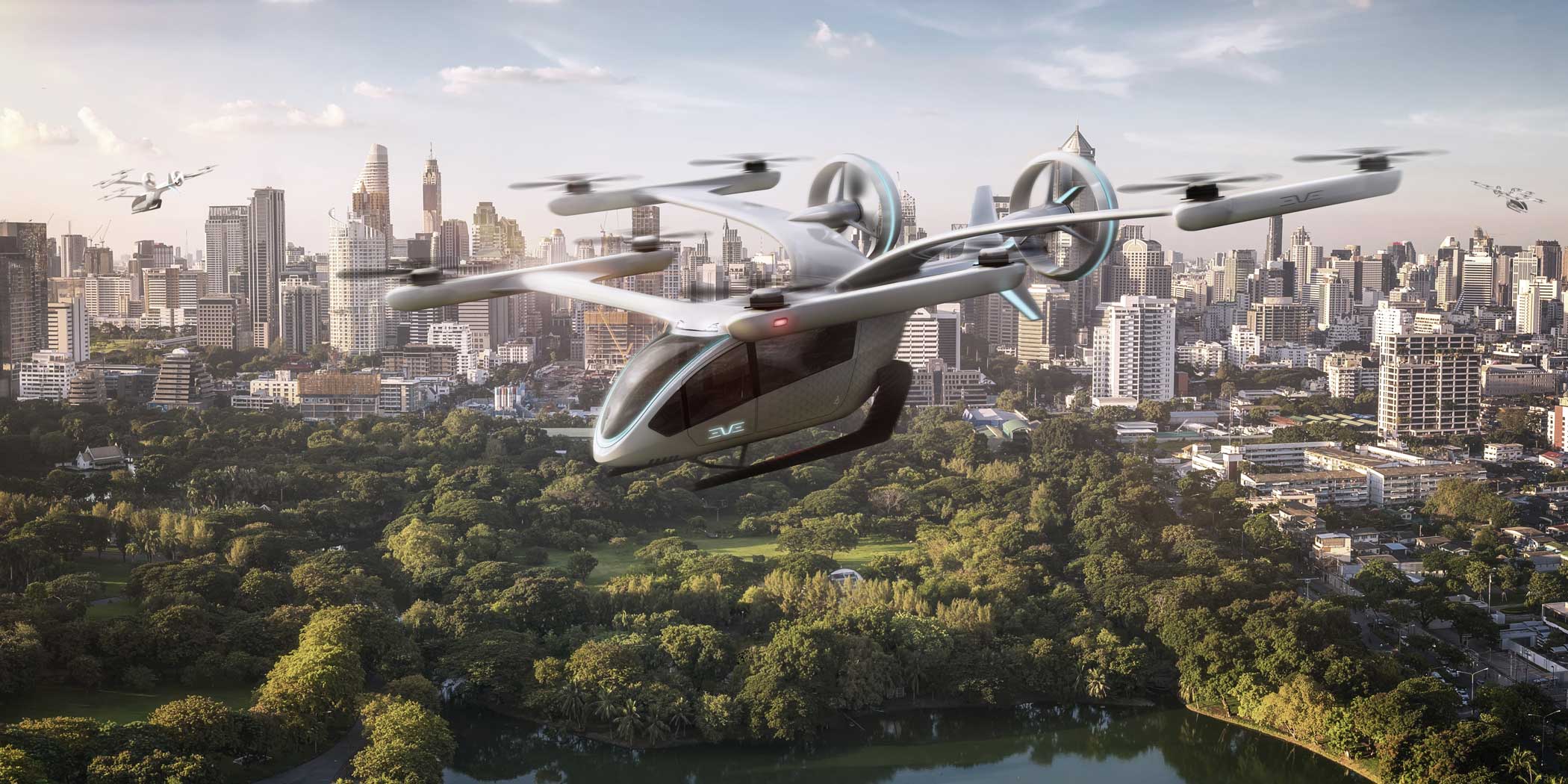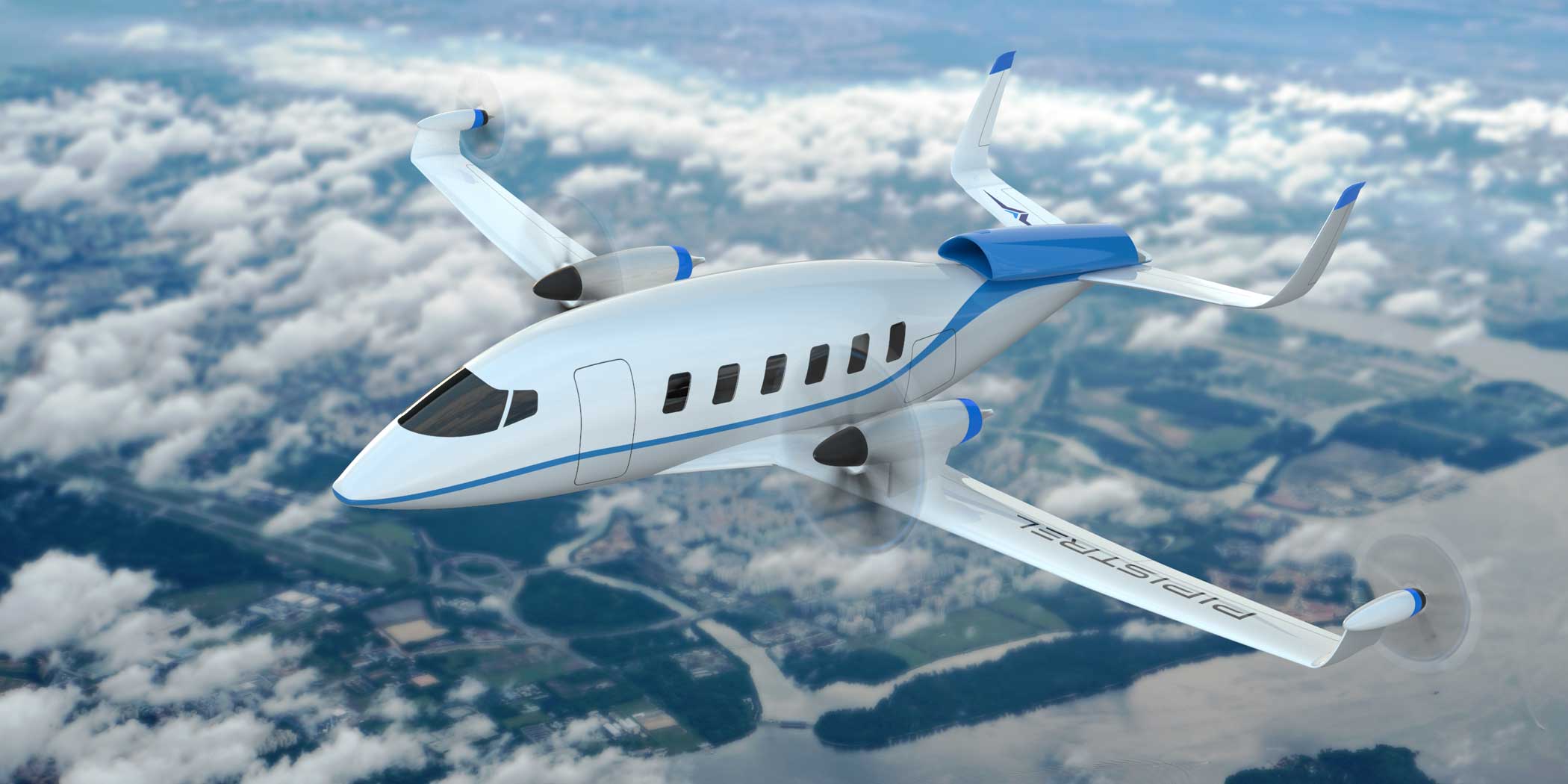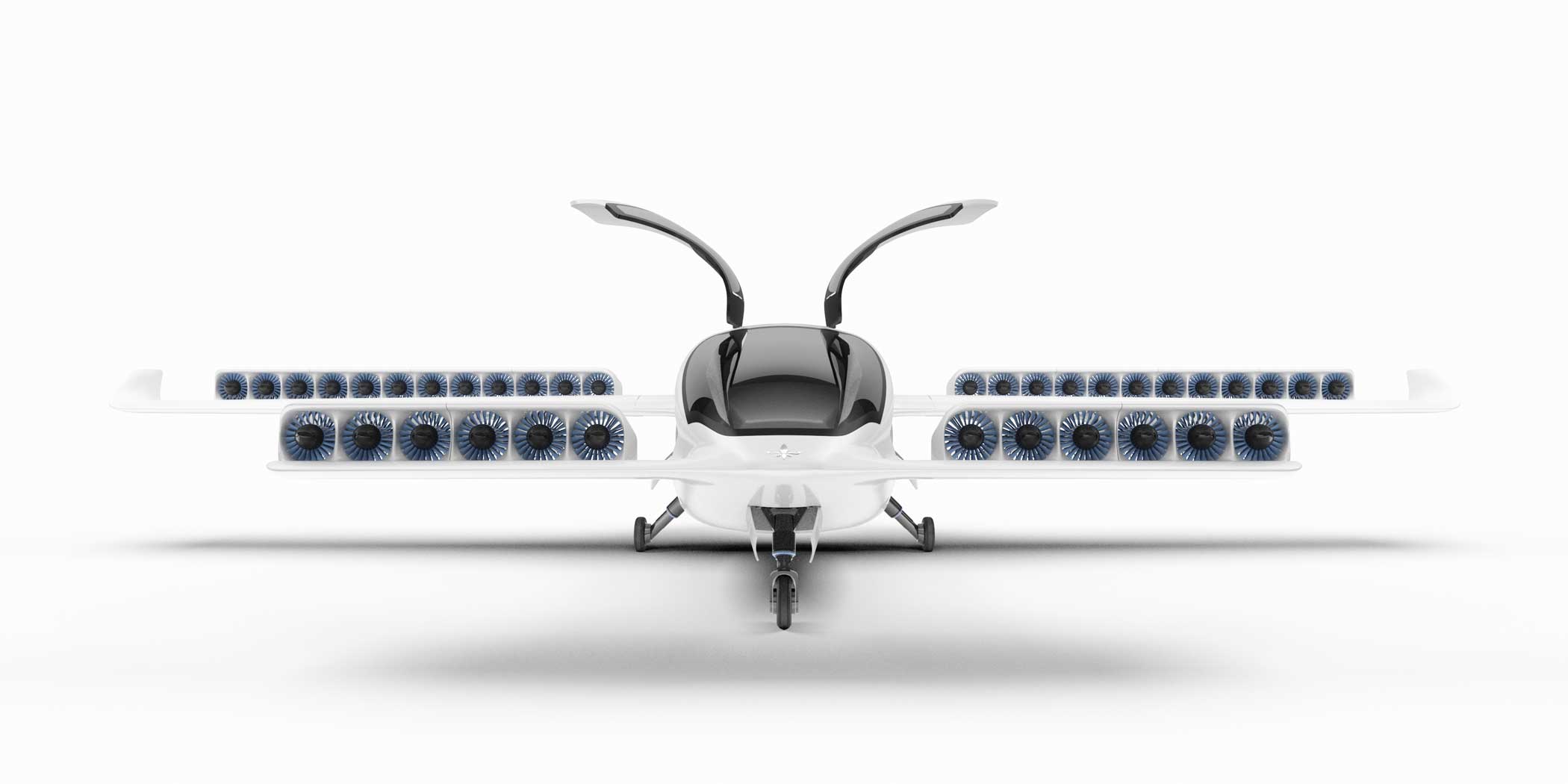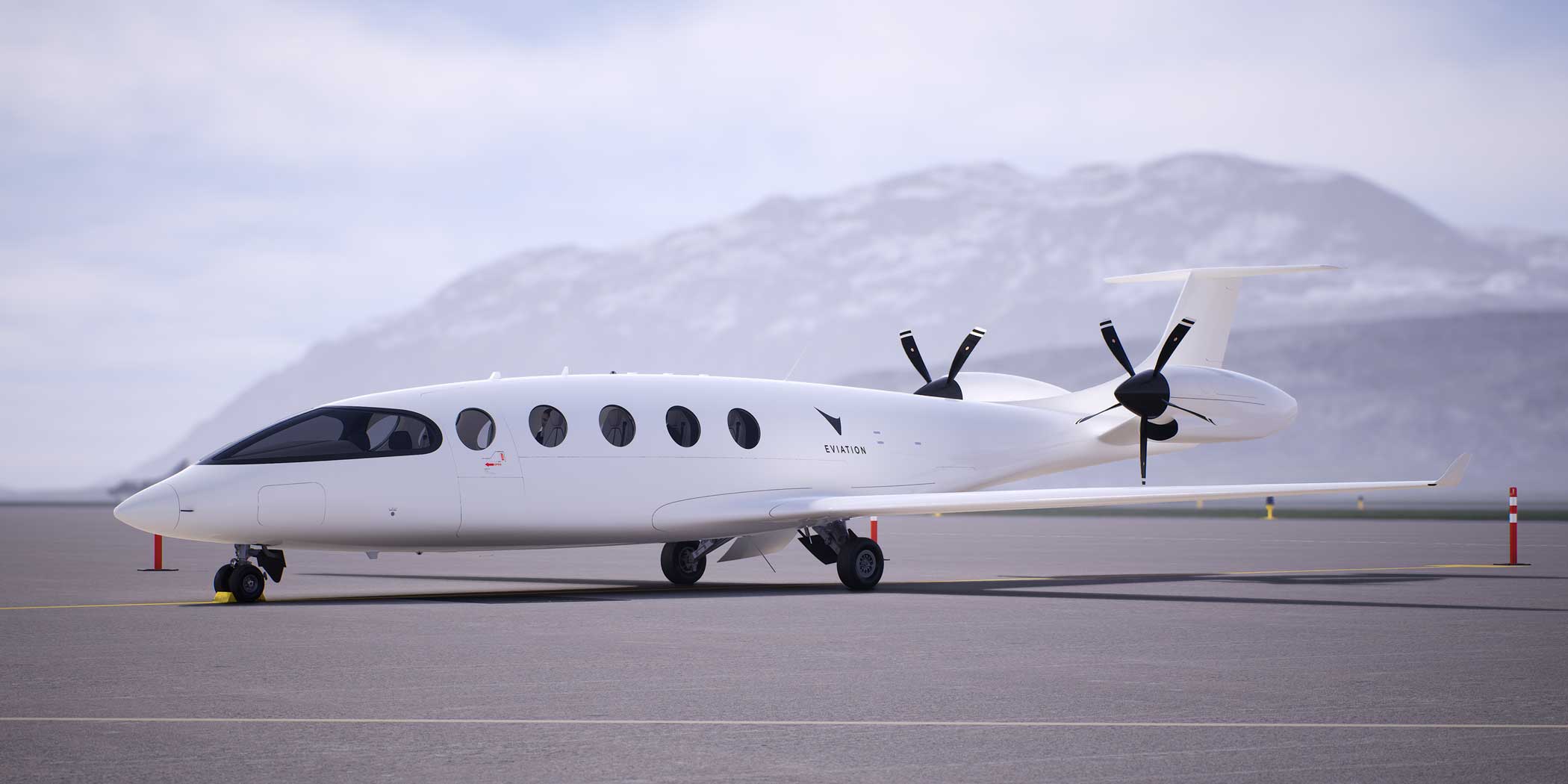Click Here to View This Page on Production Frontend
Click Here to Export Node Content
Click Here to View Printer-Friendly Version (Raw Backend)
Note: front-end display has links to styled print versions.
Content Node ID: 407288
Much like mainstream business aviation, the fast-emerging advanced air mobility (AAM) sector is committed to delivering more efficient ways of moving people and things from point A to point B. The presence of several developers of new electric aircraft this week at EBACE reinforces the impression that AAM pioneers may be seeking a closer relationship with the business aviation community and its customer base.
More generally, Europe could be among the early adopters of the new mode of transportation, with work underway already to prepare for commercial air-taxi AAM operations in countries such as France, Germany, Italy, and the UK. The first taste of this new reality could be in place in time for the 2024 Paris Olympic Games, for which 30 companies, including several eVTOL aircraft developers, are now working to be ready to launch air-taxi services around the French capital through the Re.Invent Air Mobility Challenge.
Prominent business aircraft manufacturers Airbus (Booth Z43, Static Display AD_5) and Embraer (Booth Z29, Static AD_4) both have plans to bring new eVTOLs to market. Unlike many of the startups in this sector, they intend to market these to established operators rather than pursuing a fully integrated business model in which they operate air-taxi services themselves.

In September, Airbus unveiled the outline design for its four-passenger, all-electric CityAirbus NextGen eVTOL. This will be a fixed-wing aircraft, with a V-shaped tail and eight sets of electric motors and propellers.
An engineering team led by Airbus Helicopters is working on the detailed design for the CityAirbus NextGen model, with the aim of achieving first flight with a prototype next year, en route to type certification under EASA’s special conditions VTOL rules in 2025. It will carry up to four passengers on flights of up to 80 km (50 miles) and at speeds of 120 km/h (75 mph).

Embraer’s banner in the AAM market is held by its Eve Urban Air Mobility subsidiary, which earlier this month completed a merger with Zanite Acquisition. Zanite was founded by business aviation entrepreneur Kenn Ricci.
The combined entity raised substantial fresh capital through a New York Stock Exchange equity flotation to support its plans to have a four-passenger eVTOL ready to start commercial service in 2026. Embraer is still the majority owner of the new Eve Holding entity, with an 80 percent stake.
Unlike Airbus, which has yet to open its order book, Eve already holds provisional sales commitments for some 1,785 of its yet-unnamed aircraft. In February at the Singapore Airshow, co-CEO Andre Stein said a full-scale, proof-of-concept prototype will start flight testing later this year, and initially it is expected to offer a range of around 100 km (62 miles).
Meanwhile, Textron last month completed the acquisition of European electric aircraft pioneer Pipistrel, which is now the foundation for the U.S. group’s new eAviation division. It paid around $235 million for the Slovenian company, which in 2020 became the first company to achieve EASA type certification for an electric aircraft—its two-seat Velis Electro trainer.
In addition to its portfolio of light aircraft, Pipistrel is also working on a 20-seat electric regional aircraft called the Miniliner and the Nuuva family of autonomous freighters. At face value, the Miniliner design might be viewed as an electric successor to the Beechcraft 1900 twin-turboprop commuter that went out of production in 2002.

The company has also been a key partner in Europe’s Modular Approach to Hybrid-Electric Propulsion Architecture and is preparing to start flight tests with a hybrid version of its Panthera light aircraft that Scholl made a point of saying is seen as part of Textron’s vision for Pipistrel. It was previously involved in flight testing of the consortium’s hydrogen-powered Hy-4 technology demonstrator.
Until May 2020, Pipistrel had also been developing an eVTOL designated as the Pipistrel 801. It had been one of the prospective manufacturing partners for Uber’s planned Elevate ride-hailing scheme but decided to prioritize work on the other new aircraft. Uber subsequently sold Elevate to eVTOL rival Joby at the end of 2020.
Germany-based Lilium (Booth IZ_05) is working on an intriguing eVTOL design featuring 30 ducted fans fitted in the main wing and a canard. In late March, the company advised shareholders that the projected type certification for the seven-seat Lilium Jet has slipped by 12 months or so into 2025.

Lilium expects its all-electric aircraft to operate on sectors of up to 155 miles, flying at speeds of up to 175 mph. Eventually, it plans to develop a scaled-up version that would accommodate between 10 and 15 passenger seats, which is probably the largest eVTOL design actively being planned for now.
The company is now flight testing its smaller fifth-generation eVTOL vehicle in Spain as it completes work on the production-conforming prototype that is now expected to be built in 2023. Having completed its own Wall Street listing last year, Lilium now has more than 750 employees on its engineer-heavy payroll.
Looking ahead to the operational phase of its business plan, Lilium in February reached an agreement with private aviation group NetJets covering purchase rights for 150 Lilium Jets. The companies are discussing terms under which the fractional ownership and charter group might market the aircraft to private owners and also become an operating partner for Lilium’s planned service network. It already has a provisional operating partnership agreement with Europe-based business aviation group Luxaviation.
Lilium is laying plans with partners including ground transportation group Ferrovial to develop operational networks in locations such as Florida. It also expects to see commercial operations start in countries including Germany.
As significant as eVTOLs are in having the potential to unlock new transportation options, especially in urban environments, they are not the only AAM game in town. Several companies are now advancing plans to exploit new electric and hybrid-electric propulsion technology to support reduced-carbon fixed-wing aircraft.
Eviation Aircraft has a nine-passenger airplane called the Alice in the works, and also says it will offer a six-seat executive version that could be a good fit for green-conscious private flyers. After a significant redesign last year, the U.S.-based company has had to accept a delay to the program and a long-awaited first flight has now been pushed back until this summer. The new design saw the MagniX electric motors moved from the wingtips and a V-shaped tail replaced with a more pragmatic T-tail configuration.

Last month, Massachusetts-based regional airline Cape Air signed a letter of intent (LOI) with Eviation covering the purchase of 75 of the Alice airplanes. The manufacturer said it is on track to complete type certification in 2024, and that the new model will deliver a range of around 500 miles at speeds of just over 250 mph.
France’s VoltAero (Booth IZ_03, Static AD_12) is making good progress in developing its Cassio family of hybrid-electric aircraft. It is exhibiting the Cassio 1 technology demonstrator this week at EBACE.
The first production model will be the four-seat Cassio 330, for which deliveries are expected to start in the fourth quarter of 2023, with VoltAero planning production rates of up to 150 aircraft per year. There will also be larger six- and 10-seat versions of the fixed-wing design called the Cassio 480 and 600, with the numbers referring to their respective power ratings in kilowatts. The aircraft will be powered by three of Safran’s EngineUs 45 electric motors and a 370-hp internal combustion engine, collectively driving a five-bladed pusher propeller.
According to VoltAero, the projected range for the aircraft, which are intended for various applications, including scheduled and on-demand passenger transportation, is up to around 750 miles and they will fly at a speed of around 230 mph. They will be able to take off and land in less than 1,800 feet and will be certified under EASA's CS-23 rules.
Other partners for the program include Belgium-based airframe and aerostructures manufacturer Sonaca Aircraft and Aero Composites Saintonge, which is working on the battery assembly. VoltAero is based at a purpose-built factory at Rochefort Airport in southwest France.
Last year, private aviation platform KinectAir announced plans to market fractional shares in the Cassio aircraft, starting with the Cassio 330 model. According to KinectAir, which holds provisional commitments for between 10 and 20 units, the aircraft would be based at various U.S. airports according to user demand, but it is not yet clear exactly who will operate them.
France’s Airways Aviation is also collaborating with VoltAero and is exploring plans to operate all of the Cassio models for both scheduled and on-demand flights across the south of the country. The operator, which also provides flight training, has said it will buy at least 15 aircraft.

From the UK, Samad Aerospace (Booth IZ_04) is working on both eVTOL and eSTOL versions of its Starling family of electric aircraft. The eStarling is expected to carry a pilot and up to five passengers, while the two-seat Q-Starling has been described by company founder Seyed Mohseni as a “luxury personal aircraft, like a Lamborghini.”
The new wave of eVTOL aircraft are sometimes rather dismissively referred to as “flying cars,” but there is an emerging market for personal air vehicles that is being addressed by several new players. One of these is Pal-V (Booth IZ_02) which is developing a flying sports car called the Liberty. The Dutch company is seeking to exploit EASA’s proposed new special condition rules for certifying gyroplanes for use in the air and on roads, and it aims to get approval under exemptions to existing CS-27 rules covering rotorcraft by the end of this year.